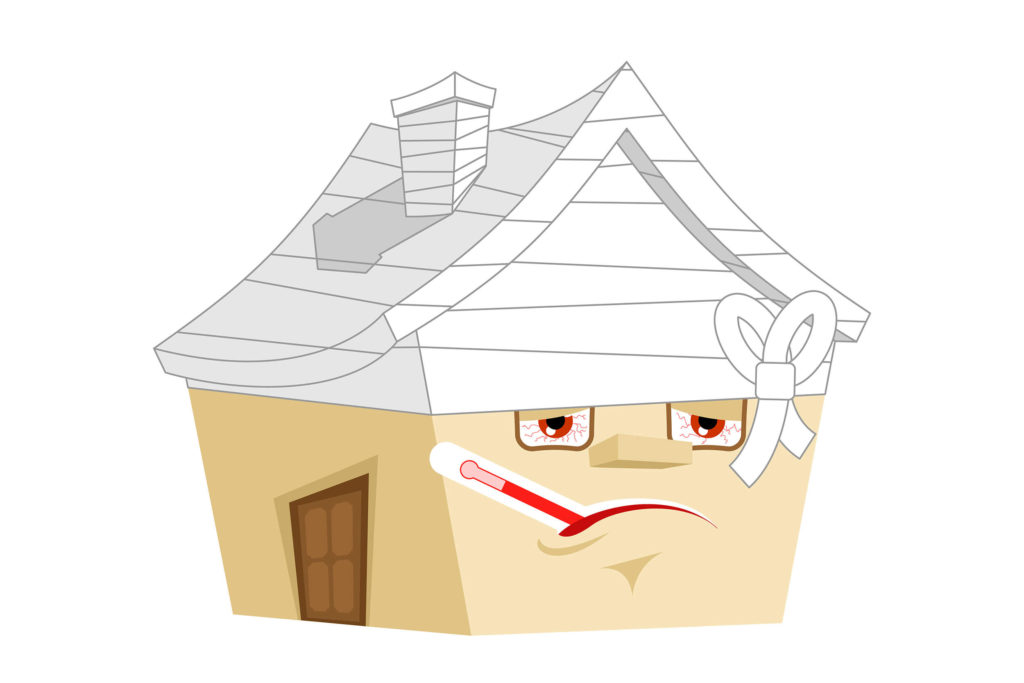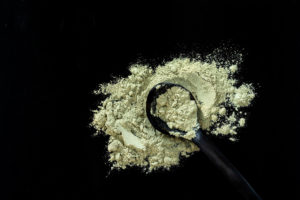By Dr Edward Group, DC, NP, DACBN, DCBCN, DABFM
More from Dr Group at his website >>>
Indoor air pollution has become a serious problem. Discussions about indoor air quality emerged in the 1970s as a result of the energy crisis leading to home construction that was more efficient by way of being sealed up tight… and subsequently lacking ventilation. It’s common knowledge that the lack of ventilation is a detriment to air quality in indoor environments. How? Stagnant air inundates the occupants with a concentration of pollution that negatively impacts the respiratory system. Is it any surprise poor indoor air quality is associated with cough, allergies, and a collective problem called sick building syndrome?
WHAT IS SICK BUILDING SYNDROME?
Sick building syndrome describes what happens when a combination of indoor air toxins and lack of ventilation meet the human respiratory system. Because the list of pollutants is so many, and their effects so varied, sick building syndrome has a multitude of symptoms and can rear its head in many ways. In general, however, the most prevalent symptoms include eye irritation and nonspecific upper respiratory symptom. [1] Pollutants such as dust, mold, harmful organisms, bacteria, VOCs, toxic gases, harmful compounds, and chemical vapors can all produce adverse effects. The combination of one or more of these pollutants can multiply the problem and any compound that can pollute the air can be a factor of sick building syndrome, they need not be inorganic “factory” chemicals. Fungi are “natural” but also an especially major biological pollutant in the indoor environment. As long as moisture and oxygen are available, mold is able to grow. This leads to it being found on nearly any surface in a building, including carpets, ceiling tiles, insulations, any surfaces, wallpapers, or air conditioning systems. Indoor environments that provide exposure to fungus can cause health problems such as allergy, asthma, pneumonia, airway irritation, and many other different toxic effects. [2]
WHAT FACTORS CONTRIBUTE TO SICK BUILDING SYNDROME?
When air pollutants emanate from building materials and furnishings, they are trapped by the lack of ventilation and are left lingering for you to breathe in. Notable pollutants include VOCs and chemicals from simple and common household cleaners or even furniture. A Japanese study evaluated VOCs emitted from nine pieces of home furniture as potential sources of indoor air pollution. Researchers detected formaldehyde and results revealed that VOC emissions from furniture may significantly impact indoor air quality. [3] Formaldehyde? On a couch?
Indoor Pollution Sources:

Remarkable Health Benefits of House Plants
1. Synthetic Insulation
2. Poor Air Circulation
3. Lack of Fresh Air
4 . Smoke
5. Paint Fumes
6. Dustmites
7. Synthetic Carpet Outgassing
8. Pet Dander
9. Toxic Household Cleaners
10. Fabric Outgassing
11. Natural Gas/CO2
12. Construction Materials
13. Bacteria From Toilet Bowl
14. Mold & Mildew
15. Lead or Toxic Paint
16. Carbon Monoxide
17. Oil & Gas Fumes
HOW COMMON IS SICK BUILDING SYNDROME?
Although it’s mainly limited to developed nations, sick building syndrome has become a global problem and received global attention. An examination of 37 buildings throughout California found that all of the buildings had very ineffective filtering systems. Furthermore, many buildings failed to meet ventilation standards. Is it for lack of codes or lack of enforcement? Well, researchers called for regulators to implement more complete building inspections. [4]
EFFECTS ON THE WORKPLACE

Part of the reason for sick building syndrome receiving so much attention is because it can have horrible and disastrous consequences for workplace productivity. It makes sense, symptoms of SBS are often direct causes for increased absenteeism and can also progress to situations of a class-action magnitude. Recently, the National Institute for Occupational Safety and Health was asked to evaluate a water-damaged office building where 1300 employees worked and reported respiratory problems, specifically airway irritation. Of course, symptoms were thought to be building-related. [5] Other research has also found that dampness and mold in workplace buildings lead to increased incidence of SBS and reports of bronchial redness. [6]
The Office of Workforce and Career Development at the Centers for Disease Control and Prevention in Atlanta examined data collected from employees who were working in a water-damaged building during ongoing repairs and observed no improvement in their respiratory health. They concluded that when a work environment is polluted, it’s not enough to fix the problem as you go along. Relocating everyone to better conditions, while repairs are made, is necessary to create a situation where respiratory health may improve. [7]
Some might expect hospitals to be exempt from indoor air quality problems, right? Well, surprisingly, a survey by the Finnish Institute of Occupational Health found that hospital staff experiences indoor air-related symptoms more even often than office workers! Because of the unique environmental needs of hospitals, they recommended the development of a model for resolving indoor air problems. [8] I agree, the effects of inhaling air contamination are absolutely indisputable, especially for those with compromised immune systems. Every hospital should have a task force specifically created to address air quality problems.
HOW TO CONFRONT SICK BUILDING SYNDROME
“Houseplants can perform these essential functions in your home or office with the same efficiency as a rainforest in our biosphere…”
Sick building syndrome is a compound problem. When a building lacks ventilation, harmful air pollutants build up to horrible levels and lead to respiratory (and other) problems. Alleviating the problem has to be, at minimum, a one-two attack. First, ventilation must be increased! Open the window, turn on a fan, consider an air exchange system! Second, reduce the sources of air pollution! As some pollutants are natural byproducts of nature (skin dander), a complete removal is difficult… but you can make a world of difference by switching to organic cleaning products, only purchasing organic home furnishings, and using non-toxic building materials. Using an efficient air purification system may also help purify your air and remove toxic invaders. Natural versions of Lysol may also be underway. Cedar leaf oil, from the Western red cedar, was evaluated in a Canadian Study as a safe cleansing agent for applications in buildings. Specifically, the alleviation of sick building syndrome. [9] Your lungs are constantly working and if you’re like most people, you spend a lot of time in your home and workplace – be proactive in making sure the air you breathe is clean, healthy, and satisfying.
REFERENCES:
1 .Tsai DH, Lin JS, Chan CC. Office workers’ sick building syndrome and indoor carbon dioxide concentrations . J Occup Environ Hyg. 2012;9(5):345-51. doi: 10.1080/15459624.2012.675291.
2. Mihinova D, Pieckova E. Moldy buildings, health of their occupants and fungal. Bratisl Lek Listy. 2012;113(5):314-8. Review.
3. Tanaka-Kagawa T, Furuta M, Shibatsuji M, Jinno H, Nishimura T. (Volatile organic compounds (VOCs) emitted from large furniture.Kokuritsu Iyakuhin Shokuhin Eisei Kenkyusho Hokoku. 2011;(129):76-85. Japanese.
4. Bennett DH, Fisk W, Apte MG, Wu X, Trout A, Faulkner D, Sullivan D. Ventiltion, temperature. and HVAC characteristics in small and medium commercial buildings in California. Indoor Air. 2012 Aug;22(4):309-20. doi: 10.1111/j.1600-0668.2012.00767.x. Epub 2012 Feb 18.
5. Akpinar-Elci M, Siegel PD, Cox-Ganser JM, Stemple KJ, White SK, Hilsbos K, Weissman DN. Respiratory inflammatory responses among occupants of a water-damaged office building. . Indoor Air. 2008 Apr;18(2):125-30. doi: 10.1111/j.1600-0668.2007.00514.x.
6. Zhang X, Sahlberg B, Wieslander G, Janson C, Gislason T, Norback D. Dampness and moulds in workplace buildings : associations with incidence and remission sick building syndrome (SBS) and biomarkers of inflammation in a 10 year follow up study. Sci Total Environ. 2012 Jul 15;430:75-81. doi: 10.1016/j.scitotenv.2012.04.040. Epub 2012 May 24.
7. Iossifova YY, Cox-Ganser JM, Park JH, White SK, Kreiss K. Lack of respiratory improvements following remediation of a water-damaged office building. Am J Ind Med. 2011 Apr;54(4):269-77. doi: 10.1002/ajim.20910. Epub 2010 Oct 28.
8. Hellgren UM, Reijula K. Indoor air problems in hospitals: a challenge for occupational health. AAOHN J. 2011 Mar;59(3):111-7. doi: 10.3928/08910162-20110223-01.
9 Hudson J, Kuo M, Vimalanathan S. The antimicrobial properties of cedar leaf (Thuja plicata) oil; a safe and efficient decontamination agent for buildings. Int J Environ Res Public Health. 2011 Dec;8(12):4477-87. doi: 10.3390/ijerph8124477. Epub 2011 Nov 30.
†Results may vary. Information and statements made are for education purposes and are not intended to replace the advice of your doctor. Global Healing Center does not dispense medical advice, prescribe, or diagnose illness. The views and nutritional advice expressed by Global Healing Center are not intended to be a substitute for conventional medical service. If you have a severe medical condition or health concern, see your physician.
YOU MAY ALSO LIKE:
WHAT ARE CHERRIES GOOD FOR?
Cherries are packed with healthy nutrients, minerals, vitamins, and antioxidants. Their low-calorie content makes them a perfect snack that you can…
PITTA BALANCING VEGGIES
In Ayurveda, summer is known as Pitta season. Those people whose primary constitution is Pitta will be the ones who will most strongly experience the…
HOW THE US HAS CHANGED THEIR EATING HABITS OVER THE YEARS
By Kevin Jones It’s no secret that the U.S. is one of the most overweight countries in the world. With 34.3 percent…
IS EATING DIRT A GOOD IDEA?
An entirely natural substance is rapidly gaining popularity in the United States and Europe as a valuable resource for detoxifying the…
TURMERIC: INTRODUCTION TO AN HERBAL POWERHOUSE
Among all the medicinal herbs, turmeric is the one with the most wide-ranging scientific validation. Though originally used in Ayurveda and…
5 FASCINATING HEALTH TRENDS OF 2020 & PREDICTIONS FOR 2021
By Tess DiNapoli This year, more people are focusing on their health and wellness than ever, and there are some exciting new…







